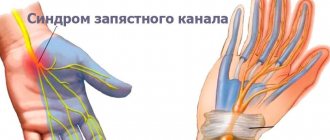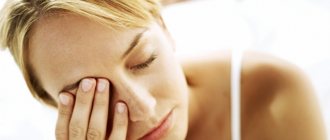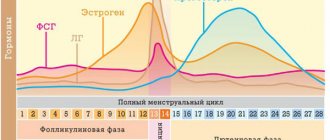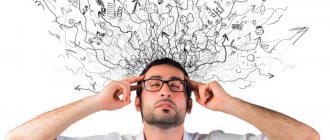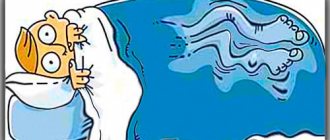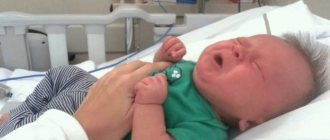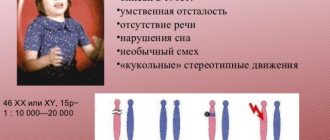Attention deficit hyperactivity disorder (ADHD) is a neurological and behavioral developmental disorder that begins in childhood. Symptoms include difficulty concentrating, hyperactivity, and poorly controlled impulsivity. Also, if adults are unadapted to ADHD, there may be a decrease in intelligence and difficulties in perceiving information.
From a neurological perspective, ADHD is considered a persistent and chronic syndrome for which no cure has been found. It is believed that some children, namely 30%, “outgrow” this syndrome or adapt to it in adulthood.
ADHD and its treatment have been the subject of much controversy since the 1970s. The existence of ADHD is questioned by a number of doctors, teachers, politicians, parents and the media. Some believe that there is no such thing as ADHD, but their opponents believe that there are genetic and physiological causes for the condition. Some researchers even insist on the influence of climatic factors in the development of ADHD in children.
What life is like for someone with ADHD
Attention deficit disorder causes difficulties for patients even at school: a teenager with this diagnosis, even if he has a high IQ, finds it difficult to learn material and communicate with peers and teachers. A person with ADHD can immerse himself in a topic that is subjectively interesting to him (however, as a rule, not for long - such people are prone to frequent changes of priorities and hobbies) and show brilliant abilities, but it is difficult for him to perform even simple routine work. At the same time, he is poor at planning, and with a high level of impulsiveness, at foreseeing even the immediate consequences of his actions. If all this is also combined with hyperactivity, such a teenager turns into a school teacher’s nightmare - he will get bad grades in “boring” subjects, surprise others with impulsive antics, disrupt order and sometimes ignore social conventions (since it will be difficult for him to focus on expectations and requirements of others).
Previously, it was believed that the disorder would “dissolve” on its own with age, but according to recent data, approximately 60% of children suffering from ADHD continue to exhibit symptoms of the disease into adulthood. An employee who is unable to sit through the end of a meeting and ignores important instructions, a talented specialist who misses important deadlines by suddenly getting distracted by some personal project, an “irresponsible” partner who is unable to organize his home life or suddenly blows a lot of money on some strange whim. - all of them may not just be weak-willed slobs, but people suffering from a mental disorder.
Causes
There is no consensus in the scientific community about what factors provoke hyperactivity and attention deficit in children. Sources give various reasons:
- bad ecology;
- complications during pregnancy (infections, taking medications or drugs) and childbirth (trauma, asphyxia, cesarean section);
- immunological incompatibility of mother and child;
- increased risks of stillbirth and miscarriage;
- any severe and chronic illness of the mother;
- high temperature (above 39.5°C) or taking powerful medications in the first year of the baby’s life;
- any diseases that impair brain activity;
- unbalanced diet.
Increasingly, experts say that the development of the syndrome depends 80% on genetics. Among the candidate genes are the dopamine transporter gene and 2 dopamine receptor genes. The remaining factors listed above can either strengthen or weaken genetic prerequisites.
Diagnostic problems
According to various estimates, 7-10% of children and 4-6% of adults suffer from this disease. At the same time, the popular idea of a patient with ADHD as exclusively an impulsive fidget is already outdated - modern science identifies three types of the disorder:
— with an emphasis on attention deficit (when a person does not have signs of hyperactivity, but it is difficult for him to concentrate, work on the same task for a long time and organize his actions, he is forgetful and gets tired easily)
— with an emphasis on hyperactivity (a person is overly active and impulsive, but does not experience significant difficulties with concentration)
- mixed version
According to the American classification of mental disorders DSM-5, the diagnosis of “attention deficit/hyperactivity disorder” can be established no earlier than 12 years. In this case, the symptoms must be presented in different situations and settings and manifest themselves strongly enough to significantly affect a person’s life.
ADHD or bipolar disorder? One of the problems in diagnosing the syndrome is that in some ways the syndrome overlaps with other mental illnesses - in particular, cyclothymia and bipolar disorder: hyperactivity can be confused with hypomania, and fatigue and problems with concentration can be confused with signs dysthymia and depression. In addition, these disorders are comorbid - that is, the probability of getting both at the same time is quite high. In addition, suspicious symptoms may be due to non-mental illnesses (eg, severe head trauma or poisoning). Therefore, experts often recommend that those who suspect they have attention deficit disorder undergo a routine medical examination before contacting psychiatrists.
Gender nuances. Last year, The Atlantic magazine published an article about how ADHD manifests itself differently in women than in men. According to the studies described in the article, women with this disorder are less likely to show impulsivity and hyperactivity and more often show disorganization, forgetfulness, anxiety and introversion.
The editors of T&P remind you that you should not rely entirely on self-diagnosis - if you suspect you have ADHD, it makes sense to consult a specialist.
Symptoms
The disease progresses differently in children, but everyone has inattention, hyperactivity and impulsivity.
Inattention
Characterized by the inability or difficulty to concentrate on one subject. Children become bored when they have to perform an activity for a long time. Consciously concentrating on something causes significant difficulties. At the same time, children are restless and find it difficult to do any work. They put things off until last, don’t fulfill their responsibilities, and can’t sit still. Often they start many things at the same time and do not finish any of them.
Hyperactivity
Children cannot sit still. They are constantly on the move and always talking about something. It is very easy to spot such a child in the classroom: he either fidgets at his desk, shakes his leg, knocks on the table with his pen, or walks around the office. At the same time, children often worry.
Impulsiveness
It seems that before doing something, the child does not think at all. When asked, they answer the first thing that comes to mind. They may make an inappropriate remark or run out onto the roadway without first looking left and right.
ADHD is often accompanied by anxiety, depression, and behavioral disorders.
Losing control
The genetic factor plays a large role in the development of ADHD - if your close relative suffers from this syndrome, the likelihood that you will be given the same diagnosis is 30%. Current theories link ADHD to functional disturbances in the brain's neurotransmitter systems—in particular, to the balance of dopamine and norepinephrine. Dopamine and norepinephrine pathways are directly responsible for the executive functions of the brain - that is, for the ability to plan, switch between different stimuli with volitional effort, flexibly change one's behavior depending on changing environmental conditions and suppress automatic reactions in favor of conscious decisions (this is what the Nobel laureate What Daniel Kahneman calls "slow thinking"). All this helps us control our behavior. Another function of dopamine is to maintain the “reward system,” which controls behavior by responding to “correct” (from a survival point of view) actions with pleasant sensations. Disturbances in the functioning of this system affect motivation. In addition, people with attention deficit hyperactivity disorder may also have abnormalities in serotonin balance. This can cause additional problems with organization, timing, concentration, and emotional control.
Clinical picture
A vivid picture of the course of symptoms is revealed in children. In adulthood, signs of the disorder are carefully hidden and hushed up, so it is quite problematic for a stranger to identify the disease at a conscious age. In most cases, children are referred to the hospital by educators who notice deviations and lack of attention in children.
Vivid symptoms begin to appear in children when they reach 5-12 years of age. The first signs can be replaced even earlier; they are revealed in the following:
- The baby begins to hold his head up early and for a long time, sit down, roll over and crawl;
- The newborn sleeps little and is more awake;
- Before falling asleep, the child gets tired, but he is not able to fall asleep on his own; hysteria is always present;
- Children with this diagnosis are very sensitive to foreign objects, people, bright lights and loud sounds;
- Toys or any objects are thrown away before the child has fully examined them.
These signs can both indicate attention deficit in children in the early period of life, and are present in some children with a restless character, up to 3 years of age. Often problems with activity leave a peculiar imprint on the functioning of all internal organs.
Children in this situation are often susceptible to digestive disorders. The presence of frequent diarrhea is a clear symptom of constant stimulation of the small intestine by the baby’s nervous system. In addition, patients with an established diagnosis have allergic reactions and various skin rashes more often than their peers.
With attention deficit in children, the main signs of disruption in the normal development of the body are insufficient attention, impulsivity and hyperactivity. Each specific symptom has its own characteristics.
Lack of attention is manifested in the following:
- Concentrating on one subject or situation quickly becomes a burden. The patient loses interest in details and does not try to distinguish the main from the secondary or additional. At this moment the baby begins to do several things at the same time. He tries to paint all areas the same color, but cannot finish the job he has started. When reading, he skips over a word or even a line. This manifestation means that the child does not know how to make plans. To treat a symptom, you need to teach your child to plan: “First you need to do this item, and then move on to the next one.”
- The patient, under any pretext, tries not to resort to performing daily tasks, homework, or helping around the house. In such a situation, the disease manifests itself either as a quiet protest, or an angry scandal or hysteria.
- Cyclicity of attention. In this situation, a preschooler concentrates his attention on a specific subject or activity for up to 5 minutes, while a schoolchild is able to study for up to 10 minutes. Afterwards, the same period of time is needed to restore strength and concentration. In patients during the rest period, a peculiarity is revealed: the person simply does not hear the interlocutor, does not react to what is happening, he is busy with his own thoughts and affairs.
- Attention is shown only if the patient is alone with a teacher or parent. At this moment, concentration is completely improved, the baby becomes obedient and diligent.
Children with attention deficit disorder have a specific characteristic. Their brain improves the moment the little patient runs, sorts out toys or plays. Such motor activity forces the brain structures responsible for self-control and thinking to work.
Symptoms of impulsivity are expressed in certain ways:
- The child listens and is guided only by his own problems and desires. All actions are based on the first impulse received in the brain. In most cases, the consequences of actions taken are never thought through or planned. There are no situations in which the baby should be completely calm.
- The patient cannot follow the instructions, especially if it includes several components. When performing a given action, the patient finds a new task for himself, abandoning the previous process.
- There is no way to wait or endure. The patient demands that he be immediately presented with what he wants. If his requirements are not met, then the child begins to make trouble, throw tantrums, abandon previously started tasks, or perform aimless actions. This manifestation of increased motor activity is very noticeable when waiting in line;
- Every few minutes there is a sudden change in mood. There are noticeable transitions from heartbreaking laughter to hysterical crying. If the child is not satisfied with something in his interlocutor, he throws things and may break or damage another child’s personal item. All actions performed do not carry specific revenge, they are performed under impulse.
- There is no sense of danger - actions are committed that are dangerous to the life of not only this child, but also his peers around him.
All these symptoms appear due to the fact that the patient’s nervous system is quite vulnerable at an early age. It is difficult for her to accept and process the entire volume of incoming information. Lack of attention and activity is an opportunity to protect yourself from excessive stress on the central nervous system.
With hyperactivity, the baby makes a large number of unnecessary movements. In this case, the child does not even notice his own actions. He can jerk his legs, move his arms, describing circles or other shapes. All this is combined into a single distinctive feature - aimlessness.
Such a child is not in the mood to speak quietly; he pronounces everything with a certain speed and in a raised voice. He doesn’t bother to wait for the end of the question, he shouts down and interrupts. In most cases, his words are not thoughtful and are offensive to strangers.
Hyperactivity is also expressed in the facial expressions of such a baby. In a short time, the whole spectrum of emotions flashes across his face - from anger to happiness.
In some cases, some additional symptoms are present:
- Impaired communication, both with peers and with adults. The patient tries to be on time everywhere and everywhere, sometimes he is abrupt and even aggressive. These signs in some cases prevent other people from making contact and create a barrier to friendships.
- Difficulties in mastering the school curriculum are identified, despite the fact that the patient’s intellectual development is at a fairly high level;
- The patient lags behind in the development of the emotional plane - whims or tearfulness often appear. An already grown-up child does not accept criticism, does not accept an unsuccessful outcome, and often behaves like a child. Medicine has established that with ADHD, developmental delays at the emotional level occur on average by 30%. So a 10-year-old individual behaves like a 7-year-old preschooler.
- The self-esteem of such a person falls. This is due to the fact that during the day the baby hears a significant amount of criticism and comments addressed to him, he is compared with more obedient and successful peers. This condition reduces one’s own importance and lowers the child in one’s own eyes, which leads to aggressiveness, imbalance and disobedience, and stimulates various disorders.
But along with all the negative aspects of the presence of the syndrome, such children are distinguished by specific positive traits. They are mobile, easy-going, and effective. When contacting a person, they quickly perceive his condition and try to help with action or advice. Often such people are selfless, ready to drop everything they are doing and rush to help a friend. A person does not have the ability to harbor a grudge or take revenge; he quickly forgets any troubles and treats others “with all his soul.”
If the symptoms clearly make themselves known, you should not neglect them and delay going to the doctor. Early detection of such a disease helps to quickly get rid of the problem through medication or restraining the child’s urges and impulses.
Disorder or personality trait?
The concept of neurodiversity, an approach that views different neurological features as a result of normal variations in the human genome, is now gaining popularity. Adherents of neurodiversity are interested in both sexual orientation and gender self-identification, as well as some genetically determined mental illnesses, including autism, bipolar disorder and attention deficit disorder. Some scientists believe that many of the behaviors that lead to a diagnosis of ADHD are natural personality traits and do not indicate unhealthy abnormalities. But because such traits make it difficult for a person to function in modern society, they are labeled as “disorders.”
Psychotherapist Tom Hartman developed the spectacular “hunter and farmer” theory, which posits that people with ADHD retain the genes of primitive people responsible for behavior optimal for hunters. Over time, humanity switched to agriculture, which required more patience, and “hunting” qualities - quick reactions, impulsiveness, receptivity - began to be considered undesirable. According to this hypothesis, the problem lies only in setting tasks, and the ability of people with the syndrome to “hyperfocus” - strong concentration on a task that is subjectively interesting to them to the detriment of all others - can also be considered as an evolutionary advantage. True, Hartman is difficult to consider as an objective researcher - his son was diagnosed with ADHD.
But in any case, there is a sound grain in this theory: since one of the most important criteria of mental health is the ability to successfully cope with everyday tasks, many problems can be mitigated by choosing a suitable field of activity. That is, one where routine processes and patience play a lesser role and a “sprinting” temperament, the ability to improvise, curiosity and the ability to easily switch between various activities are valued. For example, it is believed that with ADHD you can make a good career in sales or entertainment, in the arts, and in “adrenaline” professions (say, a firefighter, a doctor, or the military). You can also become an entrepreneur.
Diagnostics
Diagnosis of the disease is not confirmed by any special equipment, but is carried out by monitoring the child’s behavior, development and mental abilities. The diagnosis is made by a qualified doctor who takes into account all information from parents, teachers and peers. Diagnosis of ADHD is carried out using the following methods:
- Collecting information about the child regarding visiting a doctor.
- Study of dopamine metabolism.
- To identify the diagnosis, the doctor may prescribe Doppler ultrasound, EEG and video-EEG.
- A neurological examination is carried out, during which the use of the NESS technique is possible.
- Genetic examination of parents to identify the causes of the disease.
- MRI.
A complete examination of the person will show other abnormalities that could possibly influence the provocation of the disease. It is possible to conduct neuropsychological testing methods for school-aged and older children. Based on all these methods, the preliminary diagnosis of ADD and hypersensitivity is either confirmed or refuted.
How to be treated
Medications: Psychostimulants containing amphetamine (Aderall or Dexedrine) or methylphenidate (Ritalin) are still used to treat ADHD. Drugs from other groups are also prescribed, for example, norepinephrine reuptake inhibitors (atomoxetine), antihypertensives (clonidine and guanfacine) and tricyclic antidepressants. The choice depends on the specific manifestations of ADHD, additional risks (propensity for drug addiction or concomitant mental disorders) and the desire to avoid certain side effects (an approximate list of “side effects” from different drugs can be found here)
Since in Russia psychostimulants are firmly entrenched in the list of dangerous narcotic substances that are not available even by prescription, domestic psychiatrists use atomoxetine, guanfacine or tricyclics.
Psychotherapy. Cognitive behavioral therapy is believed to help with ADHD, which, unlike many other schools of psychotherapy, emphasizes working with the conscious mind rather than the subconscious. For a long time, this method has been successfully used in the fight against depression and anxiety disorders - and now special programs have appeared for the treatment of attention deficit disorder. The essence of such therapy is to develop awareness and not allow irrational patterns of behavior to take over a person’s life. Classes help control impulses and emotions, deal with stress, plan and systematize your actions and bring things to completion.
Nutrition and dietary supplements. You can try to adjust your diet in accordance with the advice of foreign medicine. The most common recommendations are to take fish oil and avoid sudden spikes in blood glucose levels (that is, say no to simple carbohydrates). There is also evidence showing a relationship between low levels of iron, iodine, magnesium and zinc and increased symptoms. Some studies suggest that small amounts of caffeine may help you concentrate, but most experts still advise against drinking too much coffee. In any case, adjusting your diet is more of a “maintenance” measure than a full-fledged way to combat the disorder.
Schedule. People with ADHD, more than anyone else, need planning and a clear routine. An external “backbone” helps to compensate for internal problems with systematization and time management: timers, organizers and to-do lists. Any large projects should be divided into small tasks and rest periods and possible deviations from the schedule should be included in the plan in advance.
How to treat ADHD - attention deficit hyperactivity disorder?
As with diagnostic issues, there is no consensus here either. ADHD is a diagnosis in which a child can overcome his limitations only with the help of his parents
Photo from huffingtonpost.com
Read the first part of the article (about diagnosing ADHD) here.
Passionate controversy surrounds the use of drugs. In the United States, stimulants are used to relieve symptoms of ADHD, the most common of which is Ritalin (methylphenidade). Their use is sharply criticized by some experts and the public; the World Health Organization has expressed concern about them, but a number of medical agencies insist on the effectiveness and safety of stimulants.
The studies supporting the effectiveness of stimulants and the contrary studies showing ineffectiveness, harmful side effects, and the risk of addiction to cocaine during adolescence in children who took stimulants for a long time could be devoted to a separate article.
Both in the West and in Russia, in order to reduce the hyperactivity and excitability of a child, antipsychotic drugs (Sonapax, Neuleptil, Rispolept, Abilify, Seroquel) are widely used. Meanwhile, studies show that these drugs reduce the volume of brain tissue, not to mention such side effects as weight gain, increased cholesterol levels in the blood, increased blood pressure, the development of diabetes, tremors, and even tardive dyskinesia.
In the UK, the right to prescribe antipsychotics is given not only to specialists, but also to pediatricians. In 2011, the British discovered that over the past 10 years the number of children taking these drugs has doubled, and many of them are those who are barely 5 years old.
This impressed the government, which decided to allocate £32 million to expand mental health services for children and young people.
As mentioned in the first part of the article, it is very important to conduct a medical examination of a child with ADHD. In some cases, by taking control of physical problems, it is possible to reduce the symptoms of hyperactivity and attention problems. For example, this occurs when normal blood supply to the brain is restored after correction of birth injuries to the cervical spine.
In Russia, to improve brain metabolism and increase cortical tone, children with ADHD are often prescribed nootropic drugs (piracetam, encephabol, akatinol memantine, glycine, phenibut). We often hear from doctors that they observe a positive effect from drugs in their practice, but their effectiveness has not been clinically proven.
The image of a child with an unnamed diagnosis of ADHD - inattentive in class, doing poorly in school, unfocused at home - is often used to advertise multivitamins. I drank the Alphabet and immediately mastered the alphabet and other academic knowledge and skills. In fact, it is unlikely that multivitamins will have this effect. This does not exclude the possibility that a number of specific nutrients may have a positive effect on ADHD symptoms.
There are studies (like this one) showing the depletion of omega-3 fatty acids in children and adolescents with ADHD, as well as the beneficial effects of taking them (like this one). The best source of omega-3 fatty acids is fish oil, which is beneficial in many ways and has no harmful side effects, except for individual intolerance.
But in this French study, 40 children with symptoms of ADHD took vitamin B6 (0.6 mg per 1 kg of body weight) and magnesium (6 mg per 1 kg of body weight) daily for 8 weeks. The study participants showed a significant decrease in hyperactivity and aggressiveness, and improved attention. Children in the control group who took placebo showed no such changes. A few weeks after the end of the course, ADHD symptoms in children from the experimental group resumed, which also suggests that the improvements were ensured by taking B6 and magnesium.
For a child and adolescent with ADHD, nutritional structure plays an important role. Some parents are very pleased with the effects of a gluten-free/casein-free diet (which eliminates the protein gluten, found in wheat, rye, and some other grains, and casein, found in milk), which is often recommended for children with autism who share some of the symptoms with ADHD. (Mercy published a detailed article on the gluten-free diet). Others praise the polysaccharide-free diet (excluding polysaccharides, that is, sucrose and starches), which in Russian-language sources is also called a specific carbohydrate diet or paleo diet, and in English-language sources – SCD, GAPS, Paleo Diet.
A recent meta-analysis by Danish scientists suggests that the best results for ADHD were achieved by elimination diets, in which certain foods that provoke hyperactivity, impulsivity, and inattention were excluded. By the way, the same study also revealed the benefits of fish oil for children with ADHD.
Experts advise parents to identify foods to which their child may have an individual intolerance. To do this, you need to rotate foods, taking them off the diet one by one for a week or two, observing the severity of ADHD symptoms and evaluating the result.
Dr. Richard Sogn, a child psychiatrist and one of America's leading experts on ADHD, believes that children with ADHD benefit from things that are good for the brain. First of all, their diet should be rich in protein in the form of meat, eggs, nuts, cheese, and legumes. He advises giving these products to your child for breakfast, as well as as a snack between classes.
Carbohydrates are necessary, but in the form of vegetables and fruits, but it is advisable to eliminate or greatly limit sugar, sweets, flour products, rice and potatoes. It is important to include fish and other sources of omega-3 fatty acids in your diet, such as walnuts, Brazil nuts, olive oil and canola oil.
The American Academy of Pediatrics recommends eliminating foods with preservatives and artificial food colors from the diet of children with ADHD, and some experts say all food additives should be avoided.
The most important method of treating ADHD is behavioral therapy: for children this is, first of all, Applied Behavior Analysis (ABA), for adolescents and young adults - cognitive behavioral therapy (Cognitive Behavioral Therapy).
Applied behavior analysis in the USA and Great Britain is considered the gold standard for behavior correction in autistic children, but is also used in working with children suffering from ADHD.
In Russia, this method appeared not so long ago and mainly through the efforts of parent activists with continued resistance to domestic defectology and correctional pedagogy, which declared this therapy to be training. Such an opinion can only be formed after a very superficial acquaintance with this technique. In fact, it is based on a thorough analysis of the child's behavior to identify his weaknesses and strengths and create a carefully structured behavior modification program based on encouraging the child's desired behavior.
Unfortunately, outside the capital it is almost impossible to find a competent behavior analyst and therapist, but many parents complete distance courses, participate in conferences, seminars and webinars to learn the basics of therapy and help their child on their own. (You can learn more about this in the group “Center for Autism Problems”).
There are also at-home behavioral strategies that experts recommend parents use.:
- For a child with ADHD, a daily routine is very important. Make it up and make sure your child follows it.
- Organize the space so that there is a strictly defined place for all the items the child needs (clothes, toys, school supplies). This will allow the child to lose them less often.
- Avoid distractions, especially when your child is doing homework. Be sure to turn off the radio and TV during this time.
- Give your child choices, but reduce the number of options to make it easier. Offer a choice of two options for clothing, food, toys, so as not to create sensory and emotional overload.
- When you remind your child to perform a particular duty, try to keep all explanations and instructions short and clear. If possible, avoid both coaxing and the threat of punishment.
- Use visuals to highlight goals and your child's progress toward achieving them. Find a form of reward for his efforts. Be sure to ensure that the tasks are realistic and do not exceed the child’s capabilities.
- Help your child find an area in which he can apply his abilities and experience a sense of success. This will boost his self-esteem and help him develop social skills.
In general, ADHD is a diagnosis in which a child can overcome his limitations only with the help of his parents, even if it is dealt with by the most highly qualified specialists. Parents are required to have a deep understanding of the child’s problems and needs, patience and willingness to walk with him a long and difficult path to recovery or maximum adaptation for an independent successful life.
Sources:
ADHD Diets
Facts About ADHD
ADHD correction
In order to achieve effective treatment, the unification of parents, doctors and teachers is required.
One of the most effective methods for correcting ADHD is the Davis method. It does not suppress the child’s peculiarities of perception and his unusual abilities. With the help of the “orientation point,” the child masters the “focusing” mechanism. Thanks to this technique, the child will avoid accusations of lag and slowness and will be able to reveal his creative abilities.
The main treatment for ADHD is stimulants (Ritalin, Cyclert, Dexedrine, and others), although there are many reports of overdose. They help reduce hyperactivity. However, the doctor must individually select the dosage, monitoring possible side effects.
Treatment of the disease
Therapy aimed at relieving ADHD symptoms allows sufferers to participate in activities that were previously inaccessible to them. Complex treatment is aimed at correcting behavior, increasing self-esteem, motivation, and educational activity.
Courses include medication and behavioral therapy. The following points are taken into account:
- It is better to treat preschoolers with combined methods;
- Students perceive behavioral therapy worse, but medications have a good effect.
In adults, treatment for ADHD is practically no different from in children. But drugs and their dosage are selected taking into account associated factors, strictly on an individual basis.
Drug effects
Drug treatment is based on stimulant drugs. Their quantity and frequency are constantly adjusted until the desired result is achieved. These can be either injectable medications or those available in tablet form. All of them have a prolonged effect.
Sometimes antidepressants are prescribed in parallel, or stimulants are used instead, which have strong side effects. As a maintenance therapy, vitamin preparations are introduced into the course.
Psychotherapy and behavior correction
Non-drug treatments focus on behavior management. Psychological consultations include:
- role-playing games;
- behavior modeling;
- self-control;
- goal setting.
The work of a specialist is important and has a good effect in the socialization of patients with ADHD. School psychologists and teachers pay more attention to such children, selecting the optimal lesson schedule and complexity of tasks.
Classes with a psychologist
It is important to practice behavioral management at home as well. Therefore, parents should seek professional help and take into account all the recommendations of specialists.
Correction and treatment
Once the diagnosis of ADHD has been made, its treatment and correction begins. People tend to think of medication as treatment. However, there is much more to ADHD treatment than just prescription medications. It may include life skills training, psychotherapy, and the creation of certain conditions at school or at work. A combination of these treatment approaches is usually the most effective way to correct ADHD symptoms.
Drug treatment
For many children and adults, taking medications is a necessary part of their treatment plan. Working closely with your doctor will help you find the right type of drug and therapeutic dose for you or your child.
Life skills
Learning skills to help manage ADHD symptoms is extremely helpful. For example, learning to use a planner can help an adult keep up with their work or a child complete school assignments on time. Life skills training may seem simple, but it has a huge impact on quality of life.
Adaptation
Students can be given special conditions to help them achieve the grades they are capable of achieving. For example, someone might take notes for a student in class, and providing a quiet space will allow them to study for an exam. The workplace can create conditions that help workers maintain productivity.
Education
Your awareness of ADHD is key. Knowledge about ADHD can come from official sources such as doctors and experts, as well as informal sources such as websites, books and podcasts. Information about ADHD helps you understand the condition and how it uniquely affects you or your child.
Consultations
Counseling or psychotherapy helps address self-esteem, depression, anxiety, or relationship problems that may arise as a result of having ADHD.
Because new problems can arise at any of its stages and life stages, different treatment options will be most effective at different phases. One must be open to adapting treatment strategies to changing needs. Constant adjustments and fine tuning are the norm!
What is the difference between ADHD and ADD?
People are often confused about the terms ADD and ADHD. Both of these abbreviations refer to the same condition. The condition now called ADHD has gone by many different names over the past 100 years. As research and understanding of the condition increases, so does its name. The term ADD was used from 1980 to 1987 to describe what is now called the attention deficit type of ADHD. However, some authors and clinicians still use the term ADD when describing a type of attention deficit disorder, or use the terms ADD and ADHD interchangeably.
Recommendations for parents
Family psychotherapy also helps in the treatment of ADHD, giving recommendations to parents on how to raise such a child.
- Constantly switch attention to different types of activities.
- Organize a clear daily routine.
- Don't order, but ask.
- Don't raise your voice, don't get annoyed.
- Listen to him to the end, ask him to formulate his thoughts correctly.
- Provide physical activity.
- Practice daily using neuropsychological exercise games.
- Consult a specialist twice a year.
- Constantly stay in touch with the teacher.
- Ensure homework is completed regularly. It must be dosed.
- Be patient and repeat the same request many times in a monotonous voice until he understands it.
It is better to write down any emotional and behavioral deviations in a separate notebook so that the specialist can see the dynamics of the development of the disease.
Tips for parents
Parents need to realize that the child has deviations from the psychological norm. Excuses like “this child is indigo” or “he is spoiled” do not work. Parents use them as a kind of psychological protection. It is important for a psychologist to gently and unobtrusively lead parents to the fact that their child suffers from ADHD. It is important for parents to realize that hyperactivity is easy to correct. Educators, mothers and fathers need to show maximum patience, attention and care.
Hyperactive child at home
Important! Parental screaming is the first enemy in a relationship with a child. Such a reaction will cause him to have a further surge of aggression.
A reminder to parents states that you need to create the most favorable environment for your child. They need to be able to understand it. The baby should feel parental warmth and care. Only in this way will he learn to control his own emotions and be able to increase his self-esteem.
Attention deficit - myth or reality?
In this article, I am not going to refute the opinion of opponents of the diagnosis of attention deficit disorder, nor will I prove the concepts of its supporters, since I do not have any competence to participate in academic disputes. Yes, I don’t need it. Because, within the framework of the issue I’m considering, it doesn’t matter at all whether such a phenomenon exists in the form of a disease or whether it’s just some character traits. It is indisputable that there are certain mental traits or personality traits, or symptoms of a disorder, or all of these together, which together are generally accepted, in certain circles, to be called attention deficit. And it is impossible to deny that many people have problems concentrating, are fussy, cannot sit still, constantly fiddle with something in their hands, and cannot stand in line for a long time. This is a fact, but what to call this fact and whether it is a disease or something else is not such a big deal for solving a private problem.
It is also a fact that the above-mentioned traits can lead to major personality problems and in every possible way hinder the development of the individual. As a rule, all this begins to manifest itself in childhood and then can move into adulthood, as, for example, it happened to me. This peculiar illness joins the list of my past psychological “illnesses”, such as panic attacks, depression, emotional instability and anxiety. I got rid of some of these ailments completely, some partially, but at the same time I made tangible progress towards getting rid of them, and I am sure that in the future I will be able to completely eliminate them.
In short, this experience of self-relief from many psychological problems and the accompanying personal development made this site that you are reading now possible.
As for attention deficit, I will explain in detail what it is. I’m not going to scare you with any diagnoses, like you lived and lived, and then, suddenly, it turns out that you have some kind of disease or syndrome with a tricky name: “Thank you, Nikolai!” - you say. No, I’ll tell you what this could mean, and you can decide for yourself whether it’s dangerous for you or not. Often people themselves do not suspect that they have such problems, just as I did not suspect, considering this fussiness and eternal haste to be quite natural. And of course, I will tell you how to get rid of it, based on my experience.
If you have been reading my blog for a long time, then you may have seen an article about the feeling of boredom. Many of the provisions in this article are similar to the one you are reading now. Let me explain the difference between chronic boredom and ADHD to avoid confusion. The first stems, to a greater extent, from some personal aspects, our hobbies, aspirations, habits, while the second relates more to the work of our nervous system and fixed patterns of brain function.
If boredom is a symptom of spiritual limitation, inner emptiness, then ADHD is rooted in some habits of the mind to absorb information in a certain way. Boredom manifests itself over a long period of time, ADHD over a short period of time. Both are very dangerous for the individual and, to a large extent, are interconnected and separating one from the other is not always easy; often chronic boredom and ADHD appear together. So, after reading this article, I recommend reading the article on boredom to have a complete understanding of the problem.
How is the problem diagnosed?
Doctors do not give a seven-year-old child a neurological diagnosis, even with severe hyperactivity, and do not use medications. The decision is related to the psychology of the growing organism. Preschool children experience two serious psychological crises, occurring at 3 years and 7 years (we recommend reading: the main symptoms of a 3-year-old crisis and ways to overcome it). So what criteria does a doctor use to make a verdict about ADHD? Let's look at two lists of criteria used to diagnose the disease.
READ IN DETAIL: a child has a 7-year-old crisis
Eight signs of hyperactivity
- Children's movements are fussy and chaotic.
- They sleep restlessly: they roll around a lot, talk often, laugh or cry in their sleep, throw off the blanket, and walk around at night.
- It is difficult to sit in a chair; they constantly turn from side to side.
- There is almost no state of rest; they run, jump, spin, and jump all the time.
- They don't handle sitting in line well and can get up and leave.
- They talk too much.
- When talking to someone, they do not listen to the interlocutor, try to interrupt, are distracted from the conversation, and do not answer questions asked.
- When asked to wait, they respond with expressed impatience.
Eight signs of attention deficit
- There is no desire to perform the task given to them well. Any work (cleaning, homework) is done quickly and carelessly, often not completed.
- It is difficult to concentrate on details; the child remembers them poorly and cannot reproduce them.
- Frequent immersion in one’s own world, absent-minded gaze, difficulties with communication.
- The conditions of the games are poorly understood and they are constantly violated.
- Severe absent-mindedness, resulting in personal items being lost, misplaced, and then unable to be found.
- There is no personal self-discipline. You have to constantly monitor and organize.
- Quickly switching attention from one subject or object to another.
- The controlling mechanism is the “spirit of destruction.” They break toys and other things, but do not admit to what they have done.
If you find 5-6 coincidences in the child’s behavior with the diagnosis of ADHD, show it to specialists (psychotherapist, neurologist, psychologist). The doctor will comprehensively study the problem and find a competent solution.
How to distinguish hyperactivity from temperamental character
The main features of the choleric character are:
- the ability to easily throw out emotions and also easily calm down;
- instability;
- having your own opinion;
- presence of initiative;
- presence of leadership qualities;
- development of motor skills.
How to tell if your baby is not getting enough breast milk
Children with ADHD may not have these qualities. They do not know how to calm down and control emotions. Instead of initiative and leadership qualities, they often have low self-esteem. A child with ADHD cannot sit in one place for a long time, study and finish everything he starts. He is not able to do his homework on his own.
Note! ADHD is a disease that has no cure. Adults adapt to it, but they exhibit forgetfulness and mood swings.
Stages of work
Stages of working with children suspected of having ADHD:
- Mandatory diagnostics to confirm the diagnosis. It takes up to six months.
- Accurate implementation of all instructions for parents on how to behave and raise such a child.
- Selection of an educational institution with an adapted educational program. Constant cooperation with the teacher.
- Mandatory individual work by a psychologist (twice a year - treatment and preventive courses of 10-15 sessions).
- If necessary, regularly visit a family psychotherapist, whose sessions work with the parents and other relatives of the child.
- Continuous course of treatment with non-drug methods and medications. Adjusted annually.
In adolescence, the main symptom complex either turns into a more serious pathology and a different diagnosis is made, or partially weakens.
ADHD symptoms
If a child is suspected of hyperactivity, the symptoms of this phenomenon will depend on age.
How to understand that a child is overeating
Between the ages of 3 and 4 years, ADHD manifests itself with the following symptoms:
- impulsiveness and uncontrollability of actions;
- failure to complete the game;
- impaired motor skills of the hands, manifested in difficulty performing small work.
Note! At this age, a child may exhibit uncontrollable aggression.
At the age of five or six, the signs of a child’s hyperactivity intensify. Then the parents begin to sound the alarm, because... The baby cannot master the kindergarten curriculum. Without this, quality preparation of a child for school is impossible.
In the elementary grades, the above symptoms intensify. A hyperactive child is not able to master the school curriculum. To this are added:
- emotional lability;
- social maladjustment;
- propensity to commit crimes.
ADHD at school
School-age children may also experience:
- hot temper;
- decreased self-esteem;
- headaches;
- enuresis.
Attention! It is important for parents to detect the problem as early as possible. The sooner ADHD is diagnosed, the more effective its treatment will be.
How hyperactivity manifests itself at an early age
At 1-2 years of age, children develop the following symptoms:
- nervousness;
- tearfulness;
- prolonged hysteria;
- sleep disturbance;
- increased irritability.
In children under one year old
The first signs of ADHD in children under one year of age are:
- excitability;
- excessive reaction to washing;
- increased sensitivity to light and loud sound;
- sleep disorders;
- delay in physical development (by a month and a half);
- speech development disorder.
Hyperactivity in a child under one year old
Basic treatment
Treatment can begin only after a final diagnosis has been made. However, there are difficulties with this, because the disease can be confused with other disorders in the body. The doctor experiences even more problems from the inability to identify the disease using classical diagnostic methods. You have to make do with a regular survey, as well as the MOXO test, which allows you to study the patient’s symptoms in more detail using a computer program.
When the doctor can say for sure that the patient has ADHD, treatment should begin immediately. It includes several methods of influencing the disease, each of which is effective in its own way. It is worth considering that no one will be able to recover completely. But the right approach to therapy will eliminate most symptoms.
Drug therapy
Only a doctor can make an exact decision on how to treat attention deficit in adults in each specific case. It is strictly forbidden to prescribe medications on your own, as well as to adjust the dosage prescribed by a specialist.
The main method of therapy is psychostimulants: Adderall, Dexedrine or Ritalin. They are banned in many countries, which is associated with a lot of side effects. Therefore, they are replaced with Atomoxetine tablets or similar ones.
Additionally, the patient is prescribed other medications:
- "Bupropion";
- "Dizpramin";
- "Clonidine";
- "Nortriptyline."
The exact prescription depends on the symptoms of the disease and the individual characteristics of the patient. In some cases, you can do without medications at all.
Psychotherapy
The use of psychotherapy can have a positive effect in almost 100% of cases. Professionals will help you solve many problems, as well as adjust your thinking so that there are fewer difficulties in later life.
The first component is personal and family psychotherapy. They help you understand yourself and your relationships. The specialist will teach you how to properly cope with the difficulties that arise with ADHD and will contribute to the development of a positive outlook on life, which is very important with such an illness.
Cognitive behavioral psychotherapy becomes the second component. It helps eliminate everything negative in a person’s life. The main goal of the method is to have a practical impact on the patient’s everyday life to eliminate all factors that provoke manifestations of attention deficit disorder.
Folk remedies
Treatment of attention deficit disorder in adults can be done using folk remedies. They calm the body, normalize brain function, and also promote more productive activity. The usual herbal-based sedatives (Valerian, Persen) are perfect for this. You can also prepare the medicine yourself using the following recipes:
- Hop cones. Boil 2 cones in 300 ml of water for about 2 minutes, then keep in a closed container for 5 minutes and strain. Take a spoon three times a day.
- St. John's wort. Pour one spoon of chopped herb into 300 ml of water, boil for 5 minutes, let it brew for 10 minutes, and then strain. Drink two spoons three times a day.
- Lavender. Pour 150 ml of boiling water over one spoon of lavender, leave for 10 minutes, strain. Take a spoonful morning and evening.
You can also prepare herbal teas from several herbs, take baths with sea salt or take Ginkgo Biloba. Among the unusual options, it is worth considering placing a bag of dry valerian root near the bed.
Exercises
A special method of combating ADHD is exercise. Their regular implementation helps to get rid of most of the symptoms of the disease, as well as normalize the general condition of the body. The treatment of ADHD in adults is carried out by exercise by increasing dopamine, serotonin and other important hormones.
There is no need to choose any special workouts. It is enough to do simple physical exercises every day. You can start with morning exercises or jogging in the fresh air. In the evenings it is recommended to just walk. If you have the desire, it will be useful to seriously engage in any sport, devoting a lot of time to it.
Approximately 6% of people suffer from ADHD. Only a third of them receive the necessary treatment and try to overcome their symptoms.
Creativity and intuition
Children with ADD are very creative, think outside the box, and are amazingly intuitive. They are sensitive, which means they can be easily offended, but this also means they are compassionate and generous. They can get to the bottom of things quickly when others are still struggling to understand the problem. They see connections that others miss and persevere when others might give up.
As parents, you need to give your children confidence and make them feel like they are completely normal . You need to spend much more time and attention on your child's strengths, talents, and interests than on his ADD and weaknesses. You must be that beacon of calm during your child's emotional storms, of which there will be many. And you must refocus your thinking on the positive when the compass begins to move towards the negative.
Important
Children work on themselves, taking medications only when they need to work and concentrate. But for the most part this is a problem of education, psychology and communication.
Alena Paretskaya, doctor, medical columnist
just today
( 43 votes, average: 4.35 out of 5)
10th week of pregnancy: what happens to mother and baby?
HCG level during pregnancy: norm by week, reasons for deviations
Related Posts
What causes?
Until now, genes are considered the main cause of ADHD. Research and studies of families, twins, and adoptees have been helpful in understanding the genetic factors in the development of ADHD.
However, just because a parent has ADHD does not automatically mean that his or her child will inherit ADHD.
Eating a lot of sugar, allergic reactions, watching TV or video games, poor parenting, or lack of discipline do not cause ADHD.
The main causes of ADHD in a child
The reason is not always clear from a scientific point of view. It is assumed that, in addition to the main reasons, the impetus could have been infectious diseases and head injuries. The topic of the influence of Rh factors and environmental reasons has not been studied.
Baby at an appointment with a neurologist
There are usually two main reasons:
- Genetic level. Carrying out research on the genes of relatives suggests that the disease is inherited. At the same time, both close and distant relatives are capable of passing on genes. Experts have found a relationship between certain genes and the possibility of their treatment. For example, some genes respond to drug treatment while others do not.
- Factors of pregnancy. These include a woman’s failure to comply with healthy lifestyle rules during pregnancy. For example, smoking, drinking alcohol and taking drugs. If during the gestational period a woman is diagnosed with a threat of miscarriage, then the child is also at risk. Early labor or, conversely, prolonged labor.
Theme "Maslenitsa" in drawing lessons in middle groups of kindergarten
Risk factors
Risk factors are considered indicators that may not directly affect the onset of the disease, but increase the risks:
- stick infections;
- brain-related injuries;
- prematurity with extremely low weight.
For your information! In addition to infections, some viruses can also serve as a source.


